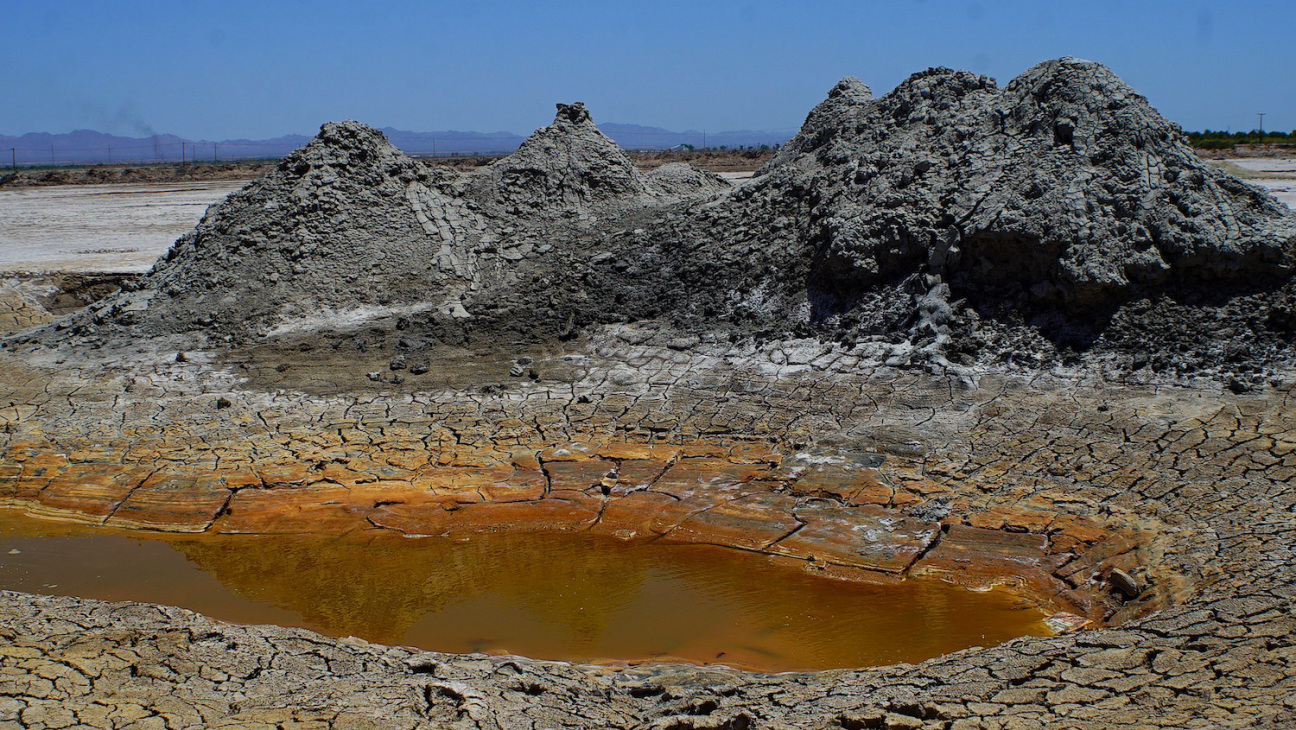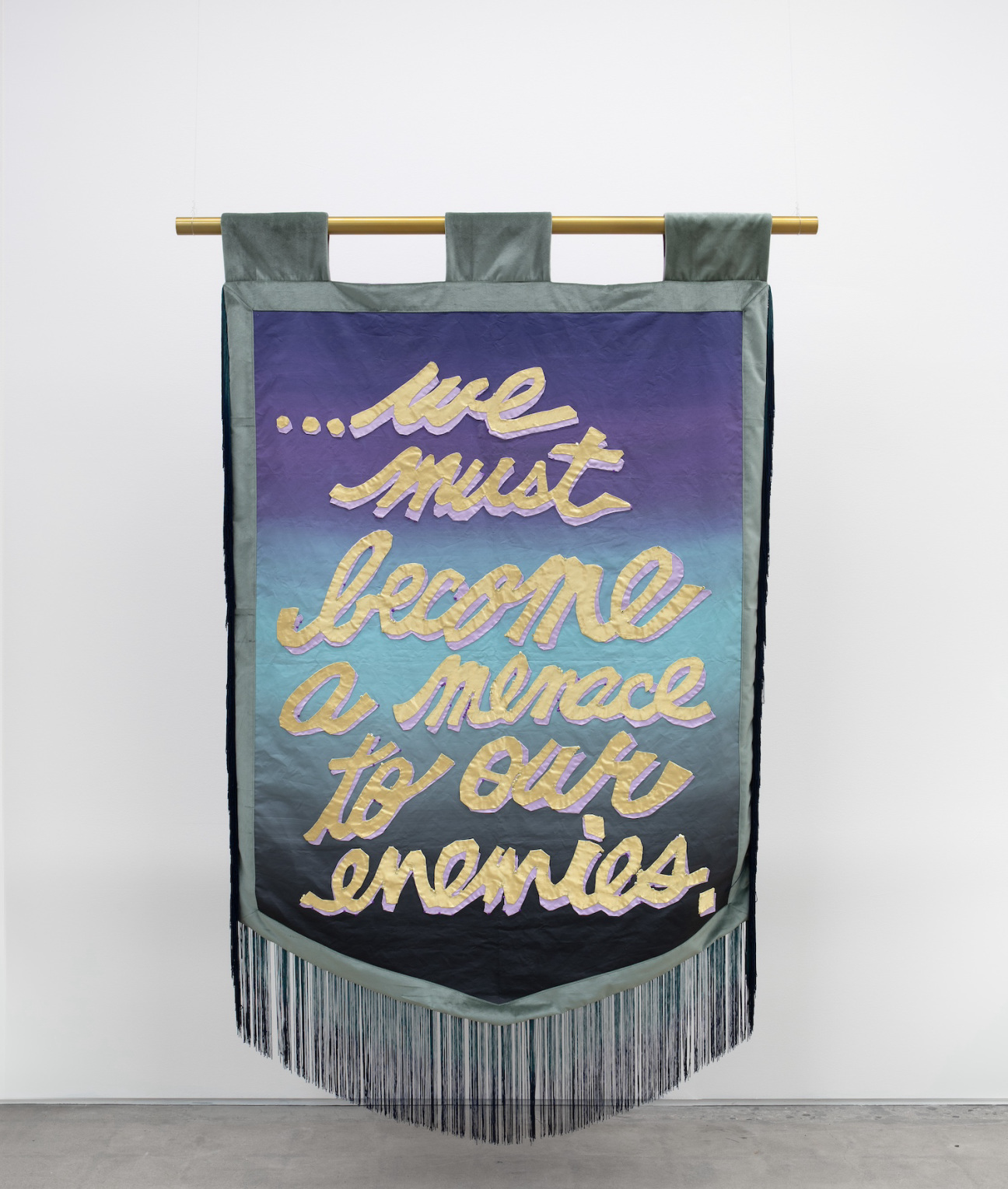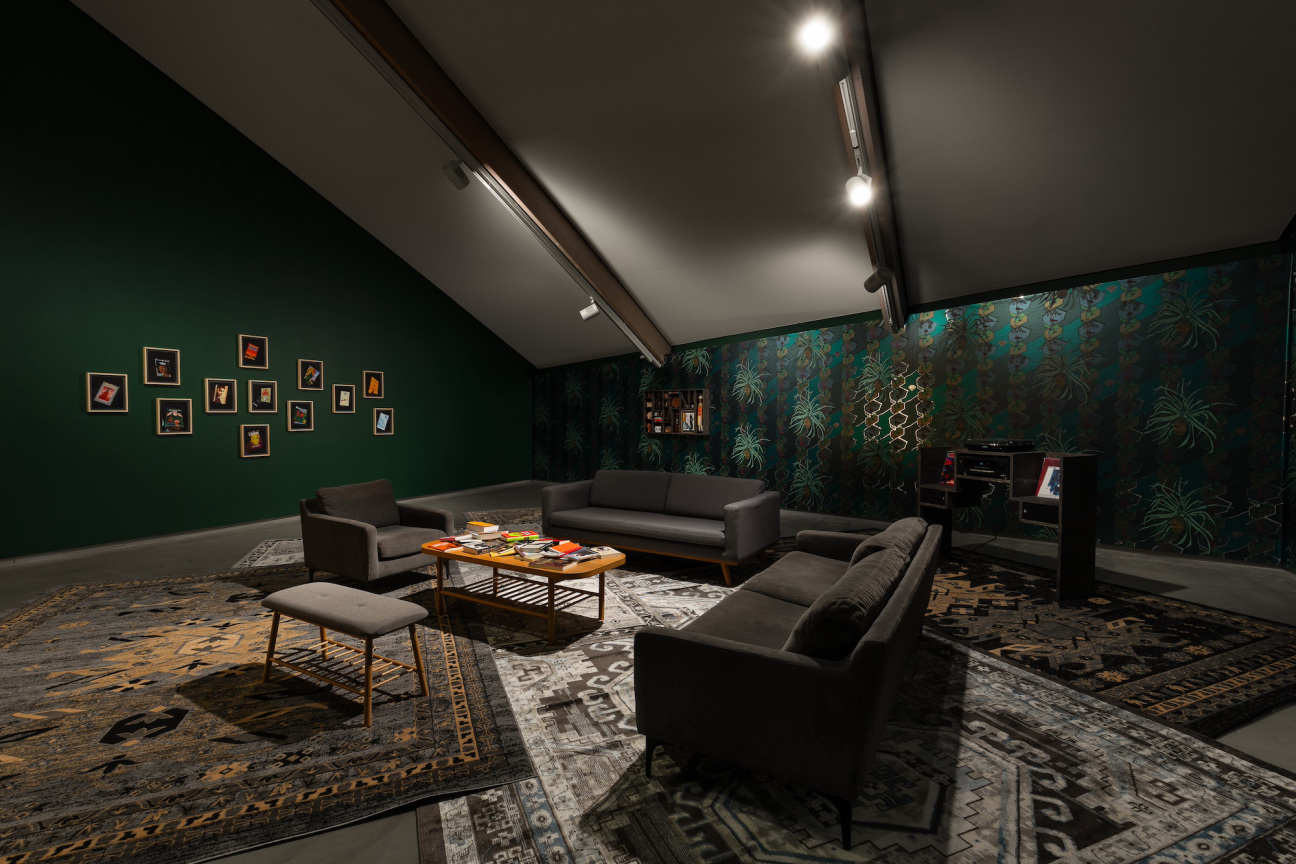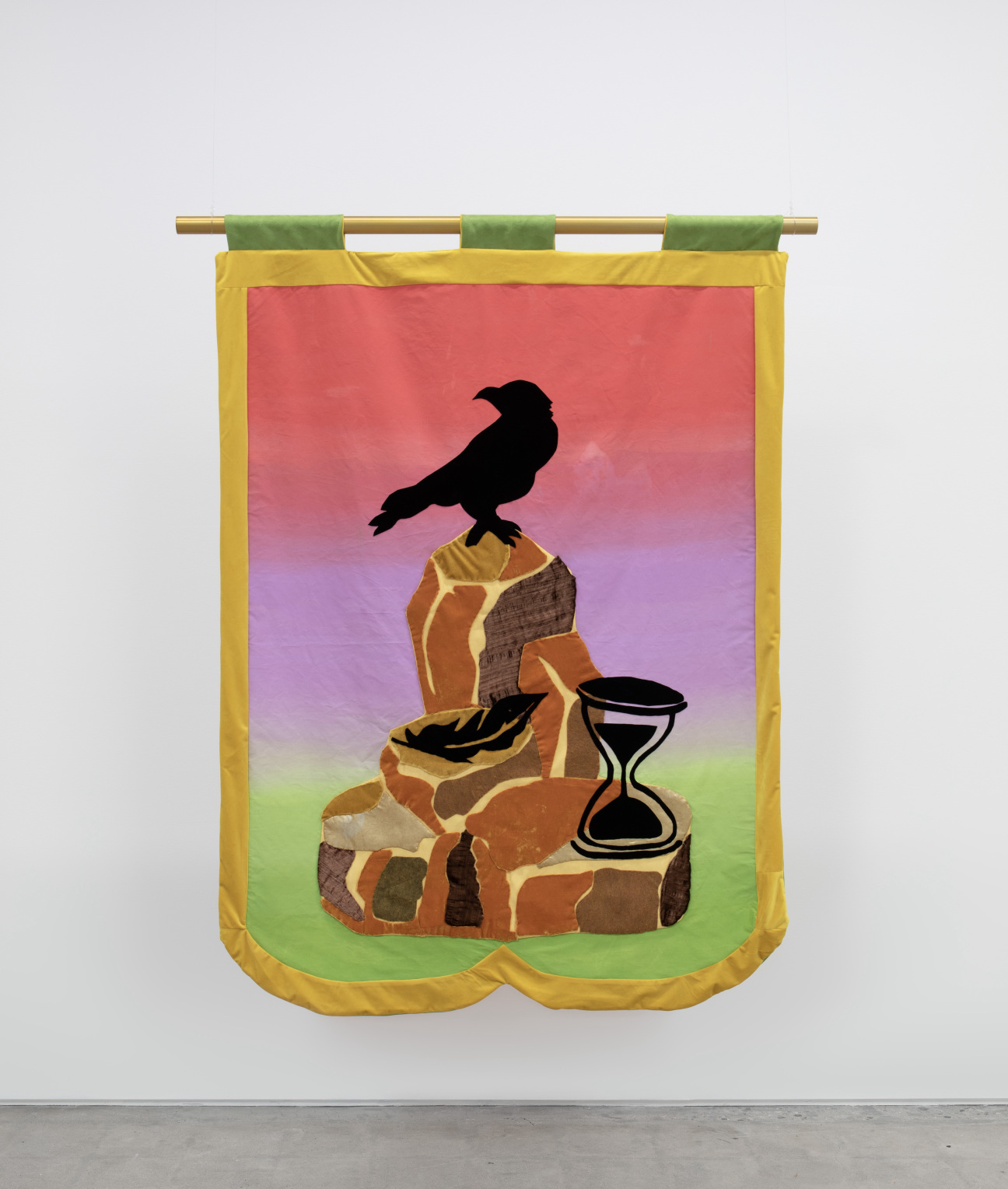
Our susceptibility to sweeping myths of glory and history is gently exposed in "The Deep West Assembly," a new exhibition by American artist Cauleen Smith at the Astrup Fearnley Museum in Oslo, Norway. In her largest museum show to date, Smith extends a generous invitation to the audience: By revealing how simply (and happily) we can be fooled, she suggests we might, with comparable ease, imagine brave new worlds of our own.
In Smith’s work, the apocalypse tends to be twinned with the abundant potential of our own imaginations, suggesting we may as well build things we care about today, since nothing will last forever. The California native is known for her experimental cinema practice and for her 1998 feature film Drylongso, which she made before moving into the realm of fine art. "The Deep West Assembly" brings together a new video work, which gives the show its title, as well as hand-poured candle sculptures, large-scale projections, handmade banners, and flower-arrangement videos.
Like Smith’s presentation at 52 Walker gallery in Tribeca this past winter, the Oslo show is inspired by Wanda Coleman, the unofficial poet laureate of Los Angeles. Here, Smith borrows Coleman’s concept of California as a horizontal Deep West counterpart to the American Deep South. To mark the occasion, CULTURED sat down with the indelible artist to talk about burning candles, taking up space, and her argument against modernism.

Charlotte Burns: The title of this show, “The Deep West Assembly,” is inspired by Wanda Coleman. I was listening back to a podcast that we did a couple years ago in your LA studio—we were surrounded by books, including Wanda Coleman’s poetry, and you spoke about the deep horizontal West. Talk us through the show, the film, the thinking.
Cauleen Smith: When I did the site visit last September, I wandered through this building not really believing that I was going to have to fill the whole [space].
There was this film that I really wanted to make about what Wanda was talking about. And that was really difficult to arrive at. I was talking to a geologist friend, Ryan Clark, about the geology of North America and how he has a theory that humans think that our culture impacts the planet, but there are a lot of planetary activities that really inform human culture. Norway’s a place where you see that. The culture is so informed by these fjords and the incredibly crystalline glacial water—this water culture, the saunas. His idea really got me thinking about California's geology.
So I wanted to look at California through that geological lens. And then when Wanda said Deep West, it was just very clarifying for me—her bringing the South up into vision, as opposed to the way we like to push it away, the economic history of slavery and all that. The “Deep South” is a way of saying this other place, this other world that is not us. And Wanda was like, "It's very much us, right here in LA." And I thought, That is brilliant.

Burns: Your narrator says in the film, “We do the stuff that costs us instead of the stuff that pays us, because it's what we'd rather do, because it feels good.” This gets to the point of so much of your work, which is about imagining new ways of doing things. There’s this moment in the video where the protagonist is dancing, and you’re essentially suggesting a revolution—through socializing and dancing.
Smith: I love it if I can discreetly observe these installations. It's my favorite thing to do. I love it when someone walks around and looks at the projections and then they look at the table and they’re like, "Oh, wait a minute." They start to really see how this whole system is working. Then they have to tell someone what they've discovered; they're like, “Come over here, let me show you something.” I love watching people figure it out for themselves. I love that epiphany moment.
Burns: For people who haven’t seen the show, you walk into the exhibition space and there are these enormous projections that are very lush and beautiful. It seems like the perspective is almost of a horse or perhaps you're on a horse, going through the landscape. And it’s like, "Whoa, I’m in the West!" All of these myths are quickly conjured. Then you walk to a table in the middle of a room and see a selection of toy plastic horses and some small cameras. And the horse isn’t moving. And you think, Wait. Cauleen just busted the myth of the West. And, oh my gosh, that’s how you make movies, so she’s also deconstructing Hollywood. At the same time, it also feels inviting because you’re showing us how easy it was to make-believe. If it was that easy to make a world, why don’t we just make new ones ourselves? You’re suckered, but also invited. It’s an emotional rollercoaster.
Smith: And then in the film, she's always talking about the world ending, but it's not this doomsday apocalyptic thing. It's just necessary for one thing to conclude so that you can build another thing.
Burns: Well in your work you always talk about how the apocalypse has already happened for some people.
Smith: Yeah, we did it already! You know, we’re doing it and we’re still surviving it and making new worlds.

Burns: Artists are always dealing with impermanence. And you've talked previously about the fact that artists often get punished by the art market if they’re not making something that will last “forever.”
Smith: The candles are a great example—these dioramic topological candles made out of a combination of natural and petroleum products, all very unstable, which is why I love wax. I was originally trying to play with what the earth itself does. It's churning through all these layers. Just as a conceptual idea, I was looking at ceramics because ceramics is the activity of the earth. It is earth, water, fire, and air. The problem is that once you fire clay, it's just dead. That shard of clay will be found in 100,000 years. It doesn't ever change. I would make something and fire it, and it would just feel like a death.
Whereas wet clay is alive. If you let it sit somewhere, mold will grow on it. But you can get wax to behave like clay. It has a very similar properties to ceramic processes, only it never finishes or stabilizes. You can burn it over and over. So those candles, you can refill the wicks and do it again. The problem is, then it's not for a museum or a collector. It's not a “forever” object. I have one sitting in my backyard and I'm watching the sun just destroy it. And it’s only activated if you burn it. You have to destroy it in order for it to be what it is. That goes against what art collecting is about right now. It's about investments. And this is what you'd rather do: what you'd rather do is burn a candle. There's pleasure and there's wonderment.
Burns: You started studying music and then you went into film, but you didn't like the hierarchy of that industry. We're sitting and talking now in an art museum.
Smith: It has a hierarchy, too. But what the art space gives me is—it's really okay for me to have an idea and develop it, and it doesn't require the buy-in of everyone. It's actually more interesting if the idea is troubling and destabilizing. Whereas in commercial cinema, that is counterproductive: We have to all be sure that we like this thing.

Burns: There's really serious business in your art. But there’s something so inviting about it—there’s such beauty in the exposure of the horror.
Smith: Right. I like the banners. Also, the messaging is pretty dark on a lot of them.
Burns: Like the banner saying, “We have gone as far as we can together.” Do you think that's true?
Smith: It feels as if something like that is happening in the United States. I feel like a lot of different constituencies in the United States would say that to each other. I don't know if there's a right or a wrong side to this feeling that we've had enough. But to make a beautiful banner with a beautiful gradient, that seems like a good way to deliver the message that this is happening.
Burns: You really stepped up to fill the space. Does it make you want more?
Smith: This is the most space I've ever had to fill, and I loved it. When you're dealing with so much space, it's an inevitably collaborative process with the institution. This is not a situation where you just ship a bunch of stuff and hang it up. At every turn, we're like, "How do we do this?" It's kind of like making a film.

Burns: You’ve created a space for people to think within the show—a reading room. I don’t know another artist who does those spaces so well. They’re usually so awful.
Smith: That’s because I have no problem making it look like my auntie’s parlor.
Burns: If your aunt's parlor looks like that, wow. You had a cool aunt.
Smith: I have no problem with rugs. I draw the line at throw pillows, but I want people to be comfortable. I want you to sit and read a book or rest. As you said, a lot of [these spaces] are not good—they're too austere because they're obeying modernism. And I actually have an argument with modernism. I just don't agree. So that room is really a refusal. It's also acknowledging these histories—of wallpaper and the rugs on the floor—are part of what Lisa Lowe, the scholar, calls the intimacies of four continents: trade and colonialism and things circulating around. That room is about that, too.
Burns: So what's next for you?
Smith: I have to pack up my studio because they raised the rent 30%. I'm one of the leaseholders, and I feel like we let everybody down because we just couldn't get a deal with this landlord. But he's right. It's very cheap. That's why we're there. So this is capitalism. We've been very good tenants and he's been a very decent landlord, but he's ready to, I guess, cash it in now. We live in a city where people are routinely displaced, so we don't even really feel that bad about it, because it's just how it goes in LA.
I'm gonna try and find a smaller space so I can have my seamstress in there making some banners for September. I actually don't mind having it go away. It's got to a point where so many shows have been made in there—there's an accumulation of energy.
“The Deep West Assembly: Cauleen Smith” is on view at the Astrup Fearnley Museum. Oslo, through September 15.










 in your life?
in your life?

